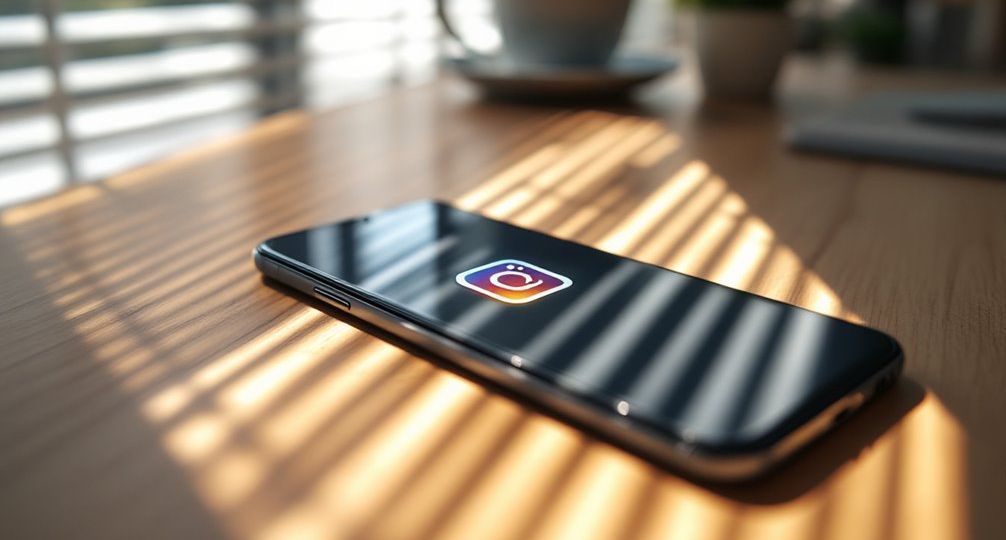
What Does Ig Mean?
Did you know “IG” doesn’t always mean Instagram? Sure, it’s popular on social media, but in different worlds, it stands for immunoglobulin, or even “I guess” in casual chats. Depending on the context, it could point to the Indo-Germanic language family or the Inspector General. Each use carries its own weight and importance, so understanding where “IG” fits in your conversation can change everything. Curious about its diverse meanings? Let’s explore further.
Key Takeaways
- “IG” can refer to Instagram, a popular social media platform with a vast user base.
- In slang, “IG” often means “I guess,” expressing uncertainty or tentative agreement.
- In the medical field, “IG” stands for immunoglobulin, crucial for immune system function.
- “IG” is used in Indo-Germanic studies to discuss linguistic evolution.
- Context is essential in determining the meaning of “IG” in any given situation.
Understanding the Abbreviation “IG”

The abbreviation “IG” might seem simple, but its meaning changes dramatically based on where you encounter it.
In the vibrant domain of social media trends, “IG” is synonymous with Instagram, a platform that shapes how we connect and share visually. It’s more than just a short form; it’s part of a language that evolves with every hashtag and mention.
However, in the dynamic sphere of slang evolution, “IG” might mean “I guess,” adding a nuanced layer to your texts, hinting at uncertainty or passive-aggressiveness. Interestingly, in the medical field, “IG” stands for immunoglobulin, a crucial component of the immune system that helps in defending the body against pathogens.
This duality highlights how language adapts to different contexts, creating a rich tapestry of communication. Understanding these shifts keeps you ahead in a world where innovation and expression are constantly intertwined.
Embrace the change!
Immunoglobulins: A Key Component of the Immune System
Moving from the world of social media and slang, let’s explore “IG” in the domain of biology, where it stands for immunoglobulins, a cornerstone of your immune system.
Immunoglobulin functions are diverse and essential, protecting you from harmful invaders like bacteria, viruses, and allergens. These Y-shaped glycoproteins, composed of two heavy and two light chains, create antibody diversity through their variable regions, allowing them to target countless antigens. Immunoglobulins are secreted by plasma cells in response to pathogenic antigens, playing a crucial role in maintaining the body’s immune system.
Among the five types, IgG dominates, crossing placental barriers to shield developing fetuses. Meanwhile, IgM leads the charge against new pathogens, and IgA safeguards mucosal surfaces.
Beyond protecting, immunoglobulins are diagnostic heroes, helping detect infections and autoimmune disorders, making them pivotal in both defense and medical innovation.
Exploring the Indo-Germanic Language Family

You’re about to uncover the fascinating world of the Indo-Germanic languages, a cornerstone of global communication.
These languages, rooted in the ancient Proto-Indo-European tongue, boast unique characteristics that have shaped their evolution and spread across continents. With over 3.4 billion speakers, Indo-European languages account for 42% of the global population, highlighting their widespread influence. From the melodic tones of Hindi to the rhythmic flow of Spanish, each language carries a rich historical significance and a distinct cultural footprint.
Historical Linguistic Significance
Imagine tracing the roots of many modern languages back to a single prehistoric tongue—Proto-Indo-European. This linguistic evolution started around 8100 years ago, birthing branches like Pre-Anatolian and Pre-Italic. Migration and cultural diffusion played pivotal roles, as evidenced by the Yamnaya and Corded Ware expansions, spreading these languages across Europe and Asia. You’ll find the oldest written records in Bronze Age texts, such as Mycenaean Greek and Hittite. These records aren’t just ancient scribbles; they’re keys to reconstructing the Proto-Indo-European culture. The Indo-European family is spoken by nearly half of the world’s population, highlighting its significant impact on modern linguistic landscapes. Through historical linguistics, you can explore the intricate relationships within this language family, guided by models like the tree and wave, revealing a rich tapestry of interconnected languages that shaped our modern world.
Key Language Characteristics
The Germanic languages boast a fascinating blend of simplicity and complexity that sets them apart within the Indo-Germanic family. Language evolution here means a streamlined verb conjugation system, focusing on present and past tenses. You’ll notice strong verbs shift through internal vowel changes, while weak verbs employ a dental suffix. This verb system reflects a language simplification trend. Stress patterns gravitate towards the root, typically the first syllable, diverging from the Indo-European free accentual system. Such phonetic shifts influence pronunciation and intonation. The loss of distinctions in the verbal system highlights the transition towards a more streamlined structure, with future and perfect tenses expressed through phrases rather than inflection. Inflectional morphology, once complex, has largely diminished, though languages like Icelandic maintain it. Vocabulary development shows unique items and historical borrowings, showcasing dialectical variations. Immerse yourself in these grammatical categories for a historical linguistics adventure!
The Role of the Inspector General
When it comes to ensuring accountability and integrity within government operations, the role of the Inspector General (IG) is essential.
You’ll find that IGs are the watchdogs of audit effectiveness, conducting independent audits to curb waste, fraud, and abuse. Their mission is to promote efficiency and effectiveness, keeping agencies on their toes.
They operate with independence, wielding the authority to access all agency records and issue subpoenas when necessary. With a dual reporting line to both the agency head and Congress, IGs keep the lines of communication transparent and honest. The independence of IGs is safeguarded by law, ensuring they can perform their duties without undue influence or restriction.
They’re not just about catching wrongdoers; they also offer technical advice, conduct thorough investigations, and recommend reforms.
Fundamentally, IGs are the unsung heroes of governmental integrity and innovation.
Instagram: A Social Media Giant

As you scroll through your feed, Instagram isn’t just a platform; it’s a cultural phenomenon shaping how we connect, share, and even shop.
With 2.11 billion monthly active users, it’s clear Instagram trends drive user engagement across the globe. The platform’s innovative features like Stories and Reels captivate the under-34 demographic, who make up 70% of its user base. Did you know that video posts engage 49% more than photos? Instagram, owned by Meta Platforms, has been a key player in the social media landscape since its acquisition in 2012. And with hashtags, posts receive 12.6% more engagement.
Businesses thrive here too, with over 25 million accounts leveraging Instagram’s advertising reach to 1.4 billion users monthly.
As you explore, you’re part of a dynamic community that’s constantly evolving, pushing boundaries, and redefining digital interactions.
Decoding “I Guess” in Digital Communication
Scrolling through Instagram, you might notice how language subtly shapes interactions just as much as visual content does.
“I guess” often embodies digital ambiguity, leaving room for misinterpretation and emotional impact on both parties. Without non-verbal cues, this phrase can lead to confusion or stress, especially when the intent isn’t clear.
To navigate these digital waters:
- Contextual Clarity: Always provide context to reduce ambiguity and guarantee your message is understood. In digital communication, utilizing various channels such as websites, mobile chat, and blogs can enhance how messages are delivered and perceived.
- Intent Transparency: Clearly state your intent to avoid unnecessary anxiety or overthinking.
- Appropriate Usage: Use “I guess” in informal settings; avoid it in professional or formal communication.
- Feedback Loop: Engage in two-way communication to clarify any uncertainties instantly.
Embrace these strategies to enhance your digital conversations.
Contextual Variations of “IG”

In the digital domain, the abbreviation “IG” is a cornerstone of social media vernacular, primarily standing for Instagram, the vibrant platform for sharing visual stories.
You’ll find “IG” sprinkled across online interactions, from tweets to comments, embodying the essence of Instagram trends. This shorthand fuels online engagement, making it easier to reference the app where visual creativity thrives.
As part of the evolving internet language, “IG” seamlessly integrates into informal communication, recognized by a global community. Terms IG and Insta derived from Instagram, showcase its widespread use beyond just the tech-savvy audience. It’s not just for the tech-savvy; mainstream adoption highlights Instagram’s cultural impact.
Whether you’re discussing the latest viral post or planning your next story, “IG” encapsulates the dynamic pulse of social media, adapting across platforms and media alike.
Field-Specific Usage of “IG”
You’ll find that “IG” takes on unique meanings depending on the field you’re in.
In biology, it’s short for immunoglobulins, which are essential components of your immune system.
Meanwhile, in the digital world, you might recognize “IG” as the popular shorthand for Instagram, where everyone shares their life snapshots. Context is crucial to determine the meaning of IG in a sentence.
Biological Context: Immunoglobulins
Imagine a complex, Y-shaped molecule that plays a starring role in your immune system’s defense strategy—these are immunoglobulins, often abbreviated as Ig.
These molecules are central to immune response mechanisms, ensuring antibody diversity to tackle countless pathogens. They neutralize threats, mark invaders for destruction, and activate the complement system for a robust defense.
- Structure: Immunoglobulins consist of light and heavy chains, held together by disulfide bonds, forming a Y-shape with Fab and Fc regions. Each immunoglobulin is composed of two identical light chains and two identical heavy chains, and the CDRs at the ends of the variable domains are crucial for recognizing antigenic epitopes.
- Function: They bind pathogens, trigger immune responses, and act as B cell receptors.
- Types: Varied isotypes like IgA, IgE, and IgG each serve unique roles, from mucosal immunity to allergic reactions.
- Significance: Essential for adaptive immunity, they circulate in the blood, ready to respond.
Linguistic Context: Indo-Germanic
Explore the fascinating domain of Indo-Germanic languages, where the abbreviation “IG” can take on a whole new meaning.
Delve into the world of Indo-Germanic evolution, a study that reveals how languages transformed over millennia. Through comparative linguistics, you can trace the simplification of verbal systems from complex Proto-Indo-European to the more streamlined Germanic languages. The Indo-European languages form a family of related languages widely spoken in the Americas, Europe, and parts of Asia, derived from Proto-Indo-European, a hypothetical language no longer spoken. Ancient language reconstruction helps classify language families by examining features like verb conjugation, where strong and weak verb distinctions emerged. You’ll notice the adjective declension’s strong and weak forms, which are still present in some Germanic languages.
Phonological changes such as Grimm’s Law highlight how stress and sound shifts occurred.
Digital Context: Instagram Usage
While the abbreviation “IG” might once have conjured up images of linguistic evolution, today it mainly refers to Instagram, a powerhouse in the digital environment.
With 2.11 billion monthly active users, IG is a vibrant space for creative expression and brand building. Your Instagram Engagement hinges on mastering video content, as posts see 49% more interaction than photos.
Crafting a compelling Content Strategy involves leveraging interactive features like Stories, where urgency and FOMO keep 500 million users engaged daily.
Here’s how to maximize your IG potential:
- Use Reels: Capture attention with short-form videos; engagement is soaring.
- Hashtags Matter: Increase post engagement by 12.6% with strategic tags.
- Embrace Stories: Polls and quizzes boost interaction.
- Shop Smart: Utilize IG Shopping to connect directly with 130 million users monthly.
Geographical Influences on “IG” Usage
How does geography shape the way people use “IG”? Well, Instagram demographics vary markedly by region, influencing both usage and engagement levels.
Urban engagement is remarkably higher, with 45% of users living in bustling cities, while rural usage lags behind at 25%. This disparity highlights how city dwellers are more integrated with global trends, constantly connected and sharing. India, with its 385.35 million users, ranks as the country with the most Instagram users, underscoring its vast reach and engagement on the platform.
In countries like India and the U.S., high user numbers reflect vast reach, with Indian users spending an impressive 40 minutes daily on IG.
Meanwhile, areas like Turkey boast the highest reach rates, capturing 88.3% of their population aged 18+.
Geographical influences create unique patterns, shaping how “IG” is experienced worldwide, adapting to cultural and social nuances across urban and rural settings.
The Cultural Significance of “IG”

Instagram, or “IG” as it’s commonly known, isn’t just a platform but a cultural phenomenon shaping how we interact and communicate. IG stands for “Instagram” in social media contexts, highlighting the evolution of language in the digital age. It’s a vital part of our cultural identity, reflecting societal norms and digital literacy. By understanding “IG,” you gain insights into modern digital discourse and trends.
Here’s how:
- Cultural Identity: “IG” mirrors societal behaviors and preferences, becoming a symbol of contemporary culture.
- Digital Literacy: Mastering “IG” equips you with essential digital communication skills, necessary for global interactions.
- Community Engagement: It fosters connection, enhancing personal and professional networks.
- Influence on Trends: “IG” drives visual storytelling and influencer marketing, reshaping marketing strategies.
Grasping “IG” means staying ahead in the ever-evolving digital environment.
Parental Involvement in Understanding Slang
Understanding the slang your kids use isn’t just about keeping up with trends—it’s a powerful tool for bridging the generational divide and fostering stronger family connections. By engaging in slang education, you’re not only enhancing communication but also building an atmosphere of trust and openness. This active parental engagement strengthens bonds, allowing kids to feel comfortable sharing their thoughts and experiences. Additionally, understanding their language helps reduce the generational gap, making you approachable and inclusive in their world. Embracing this trend doesn’t just facilitate conversations, it sparks discussions on values, respect, and responsible behavior. Familiarity with youth slang creates trust and encourages open conversations, helping parents connect better with their kids and navigate digital interactions safely.
Tools for Monitoring and Communication

Exploring the language your kids use can be eye-opening, but staying informed goes beyond just understanding slang.
Adopting effective social media strategies and innovative communication tools is essential to keeping pace with the digital world. Social media monitoring provides insights into brand sentiment, engagement rates, and emerging trends, which can be crucial for businesses aiming to maintain a positive online presence.
Here’s how you can stay ahead:
- Sprout Social: Consolidate messages with a unified inbox, track engagement using advanced analytics, and receive automated alerts for unusual activity.
- Hootsuite: Schedule posts for consistent messaging during crises, and monitor sentiment analysis to understand public perception.
- Talkwalker: Utilize AI-powered global monitoring for real-time alerts and visualize metrics with custom dashboards.
- Agorapulse: Manage comments and mentions with a social inbox, and collaborate with your team through task assignments and response tracking.
These tools empower you to navigate digital communication effortlessly.


